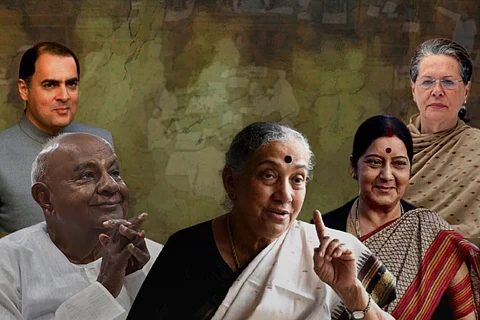

The Cabinet of the Union government on Monday, September 18, is reported to have cleared the much anticipated Women’s Reservation Bill (WRB) that provides for 33% reservation for women in the Lok Sabha and state Assemblies. It also proposes sub-reservation for SCs, STs, and Anglo-Indians within this quota. Though the government has yet to give official confirmation regarding this, it is speculated that the Bill will be tabled on September 20.
Despite women accounting for half the electorate in the country, their presence in the Lok Sabha and state Assemblies is dismal. The 17th Lok Sabha has around 14% of women members. Nonetheless, no government has so far been able to pass the WRB owing to many roadblocks including a lack of political will. Various groups have been pressing for the assent of the WRB for long, and recently, Bharat Rashtra Samithi MLC K Kavitha had written to 47 political parties to support the passage of the Bill. The Congress had also raised the same demand and the Congress Working Committee held on September 16 and 17 passed a resolution asking for WRB to be assented in the Special Session of the Parliament.
The idea of WRB can be traced back to 1989 when former Prime Minister Rajiv Gandhi constituted a committee for National Perspective Plan for Women, under Union Minister Margaret Alva, and the committee proposed the idea of reservation for women in rural and local body elections. A Constitution Amendment Bill entailing this was then passed in the Lok Sabha, but failed to get assent in the Rajya Sabha. Later, in 1992 and 1993, Congress leader and then Prime Minister PV Narasimha Rao tabled two Constitution Amendment Bills which reserved 33% of seats and chairperson posts for women in local body elections, both rural and urban. These Bills were passed, giving women access to reservations in local body polls.
To expand the scope of this reservation to the Lok Sabha and state Assemblies, a Bill proposing 33% seats for women was first introduced in 1996 by the then United Front government headed by HD Deve Gowda. Tabled in September of that year as the 81st Constitution Amendment Bill, the Bill was sent to a Parliamentary Committee that filed its report in December of the same year. After the government fell in April 1997, the Bill lapsed.
IK Gujral, who succeeded Deve Gowda as prime minister, and the Bill was taken up again in May 1997. However, it saw strong opposition, especially from Nitish Kumar’s Samta Party. According to the Indian Express, Nitish Kumar argued, “Today, out of the 39 women members, only four belong to OBCs … The population of women is 50% and OBCs are 60%, but is anyone speaking for the OBC women out of the 50% women?” The Indian Express also quoted Gujral as having confessed in the Monsoon session that followed that every party except the Left was divided on the issue of women’s reservation. The Gujral government was dissolved in November that year, leading to the Bill lapsing yet again.
Another attempt to pass the Women’s Reservation Bill was made in 1998 by the National Democratic Alliance government under Prime Minister Atal Bihari Vajpayee. According to reports, the introduction of the Bill led to dramatic scenes in Parliament, with Rashtriya Janata Dal MP Surendra Prakash Yadav tearing the document to pieces in the well of the House. The Bill lapsed again when Vajpayee government fell in April 1999.
The NDA, under the prime ministership of Vajpayee, reintroduced the Bill in 1999, 2002, and 2003. In 2005, both Sonia Gandhi and prime minister Manmohan Singh met with the various party leaders to form a consensus on the issue. Then in 2008, the first United Progressive Alliance government led by prime minister Mammohan Singh introduced it as the Constitution (One Hundred and Eighth Amendment) Bill in the Rajya Sabha. After being tabled in 2008, it was sent to a standing committee and passed in the Rajya Sabha in March 2010, sought to reserve one-third (33%) of all seats in the Lok Sabha and state legislatures for women. It also prescribed that one-third of the total number of seats reserved for Scheduled Castes and Scheduled Tribes in the Lower House and in state Assemblies be reserved for women of those groups. The 2008 Bill stated that the provision for reservation would only apply for 15 years after the Amendment was passed by the Parliament.
Despite both Congress and BJP repeatedly affirming their support for the legislation, and also despite multiple attempts to introduce it in Parliament, the Women’s Reservation Bill has so far failed to become law. In fact, the BJP’s election manifesto for both 2014 and 2019 included the passing of the Women’s Reservation Bill.
Even though the Union Cabinet is reported to have given the nod for the Bill on Monday, September 18 evening, some questions remain. Will the Women’s Reservation Bill expected to be tabled in the new Parliament building on Wednesday be the same as the one passed by the Upper House in 2010? If not, what changes or additions will the Modi-government introduce? And for a Bill that is sure to get the support of Opposition parties, why so much secrecy?
Watch:
Women’s reservation bill: What it’s about and why it’s not passed | Let Me Explain